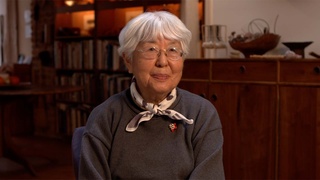Interviews
Sister was born before family was taken to Heart Mountain
Pomona Fairgrounds, they had built real quickie barracks, this was supposed to be temporary. My sister was born there, right at the fairgrounds. Then once, we were the last ones to leave the fairgrounds because they wanted to wait until she was several weeks old, I don’t recall how old, but it was several weeks. So, we were then put on a train somewhere in the Pomona area and the train took us to Cody, Wyoming. I don’t know if you’ve every been to Wyoming but during that time, in the summer it was hotter than hell, and in the winter time, your hand, if you put your hand on a metal door, it would stick, you know, it would be so cold.
Date: September 15, 2017
Location: California, US
Interviewer: Jennifer Cool
Contributed by: Jennifer Cool, Matthew Purifoy












